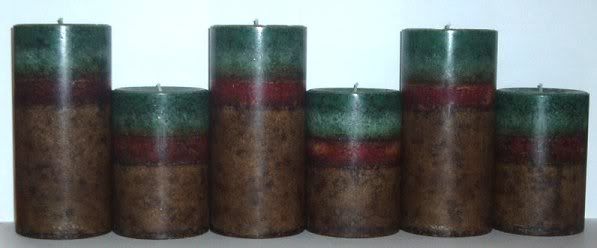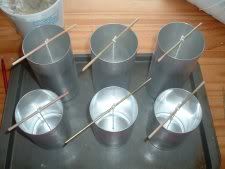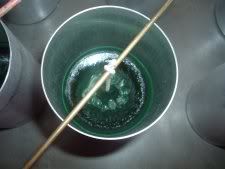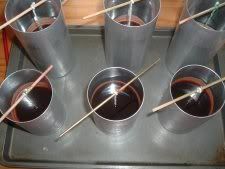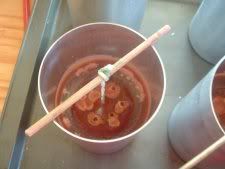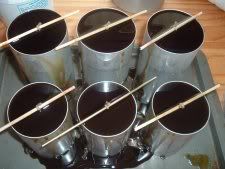A Step-By-Step Tutorial
Always cover your workspace to prevent staining and to simplify cleanup. Here, we have covered it with a sheet of parchment paper.
Gather your materials – air freshener blanks, fragrance oil, rubber stamps, stamp pad(s), coloring materials (colored pencils were used here, but fine-tipped markers also work well), brush to apply fragrance
Start by selecting a blank. Here, we’ve used an oval because it would accommodate the tall, thin tulip stamp we wanted to use.

Choose a rubber stamp that will fit your shape. Be sure that your stamp pad and markers are compatible with the fragrance oil you’ve chosen before starting. Pigment stamp pads that are marked as being permanent for use on fabric generally give excellent results. We’ve chosen to stamp the outline in black, but you can use whatever color you like. Any type of rubber stamp will work, but the clear acrylic cling type is easy to use, because you can see exactly where the stamped image will appear on the shape – no guessing involved like there is with the wood block type.

Carefully ink the stamp, making sure that all raised surfaces are completely inked.

Turn the stamp inked side down, line it up on the air freshener blank, and stamp the blank. Be sure that you don’t move the stamp, to avoid a double impression on the blank.

Remove stamp and allow the stamped image to dry completely. (Tip – if you are making multiple air fresheners with the same stamp, line them up and stamp each one, reinking each time. By the time you stamp the last one, the first one should be dry and ready to color in.) Older kids and teens can also have fun coloring these!

Now use the colored pencils (or markers) to color in the image you’ve just stamped.

Here, we used two shades of green for the stem and leaves and two shades of pink to color the tulip. This took less than a minute to color in.

Punch your hang hole, since it will be more difficult (and messier!) to do it after fragrance is applied.

When selecting fragrance oil, keep in mind that the blank will pick up the color of the fragrance. Here, the pale yellow color of the fragrance oil works well with the pinks and greens – it definitely would not have been as attractive with a brown background! Apply your fragrance with an inexpensive brush or disposable pipette.

Here’s the finished air freshener, ready for a hanger and packaging! Your creativity is limited only by the selection of rubber stamps available, and custom rubber stamps are easy and inexpensive to order online. School or organization logos can be stamped on for fundraising, or stamp with your company logo and give to customers with their orders.












